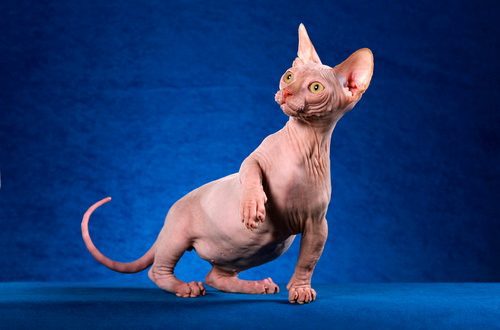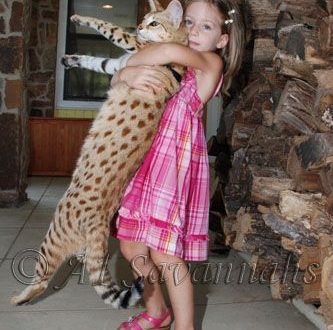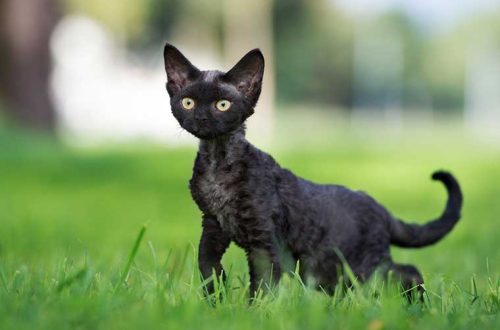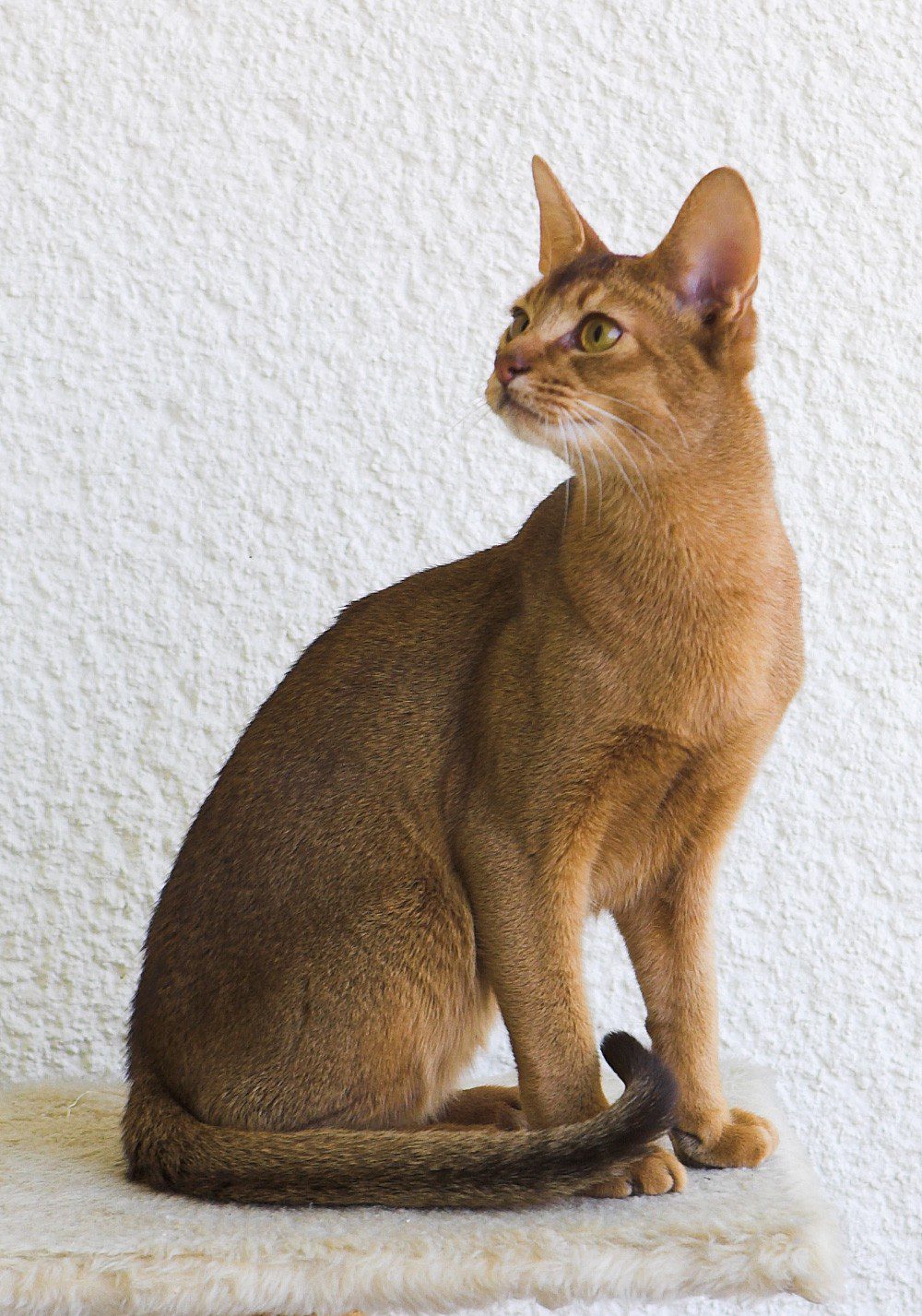
Abyssinian Cat
Other names: Abyssinian , aby
The Abyssinian cat belongs to the ancient breeds. This is a loyal, playful and intelligent pet with an iridescent coat.
Kaundan
- Characteristics of Abyssinian Cat
- Panguna nga mga gutlo
- History of the Abyssinian cat breed
- Video: Abyssinian cat
- Appearance of the Abyssinian cat
- Photo of an Abyssinian cat
- Ang kinaiya sa Abyssinian nga mga iring
- Pag-atiman ug pagpadayon
- Health and disease of the Abyssinian cat
- Sa unsa nga paagi sa pagpili sa usa ka kuting
- Photo of Abyssinian kittens
- How much is an Abyssinian cat
Characteristics of Abyssinian Cat
| Nasod nga gigikanan | |
| Uri sa balhibo sa karnero | |
| Gitas-on | |
| Timbang | |
| Age |
Panguna nga mga gutlo
- Majesty and grace are combined with kindness, affectionate character.
- Gets along well with other pets and small children.
- Unusual color, coat with characteristic overflows (ticking).
- Somewhat shy, afraid of sharp loud sounds.
- They are very mobile, having played, they are able to break something or harm themselves, for example, fall out of the window.
- They like to sit at a height, walk through cabinets, climb onto shelves.
- They participate in all matters and do not tolerate prolonged loneliness, the indifferent attitude of the owner.
- Easily accustomed to the tray and scratching post, does not spoil the furniture.
- They respect the rules established by man and are amenable to training.
- They are clean, shed little, bathing is usually treated positively or at least without fear.
- They have good health, undemanding in nutrition and care.
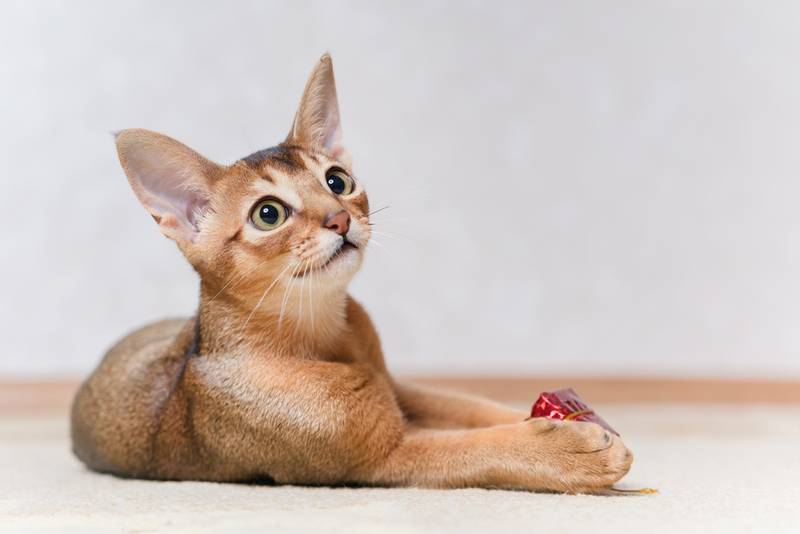
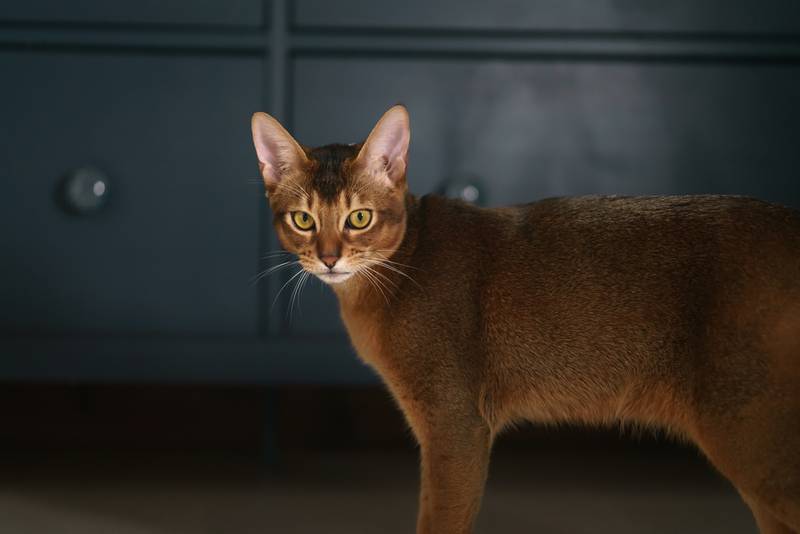
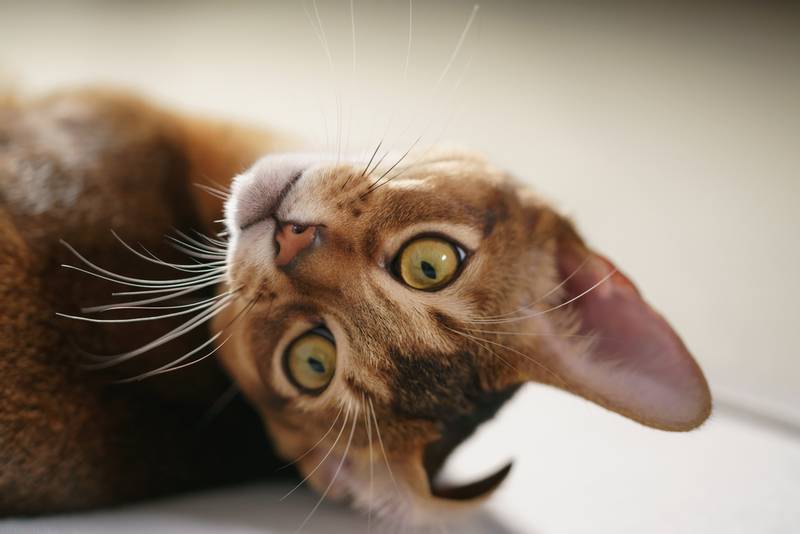
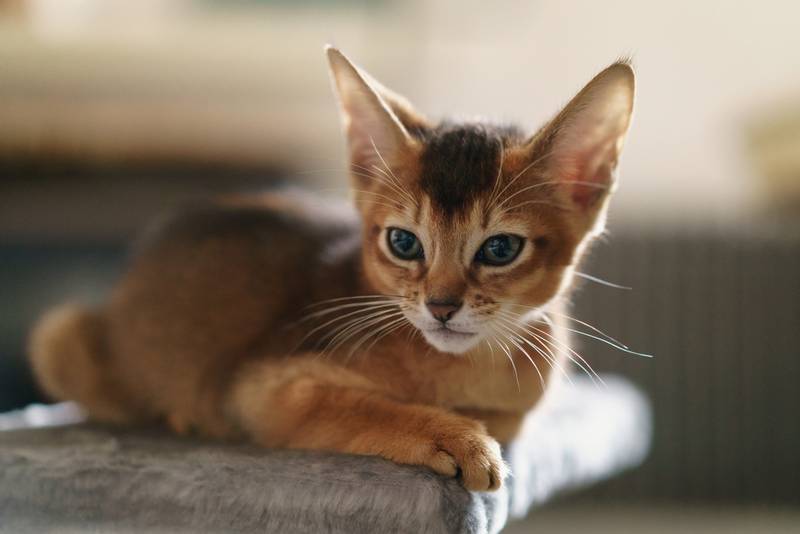
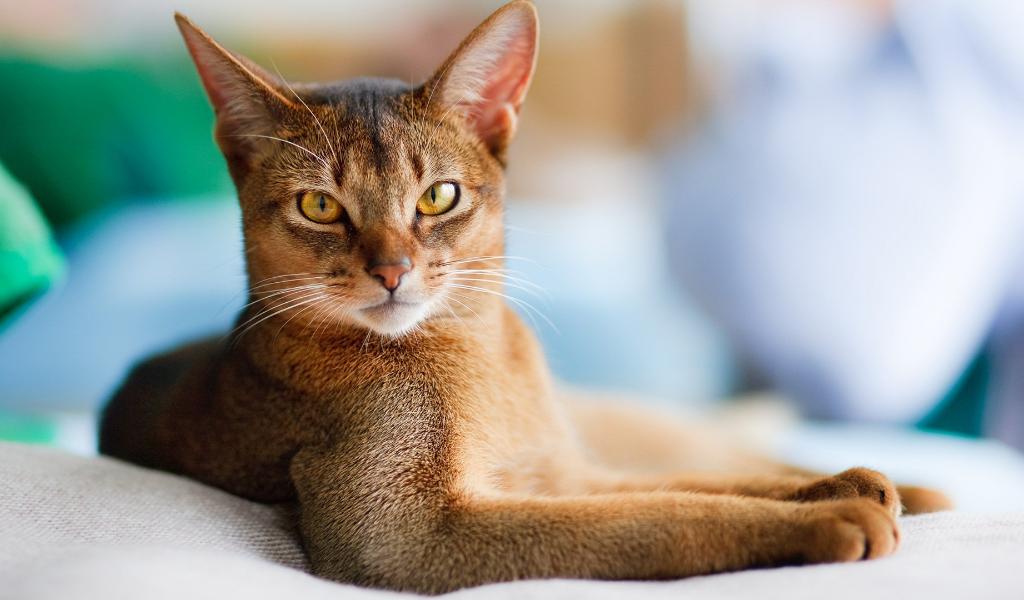
Ang Abyssinian nga iring is a short-haired breed of ancient origin. These are very smart animals, in which majestic habits, love for the owner and mobility are surprisingly combined. They are devoted, balanced, ready to give and receive attention. Pets are in good health, inexpensive to maintain. Abyssinians are suitable for families with children, active positive people.
History of the Abyssinian cat breed
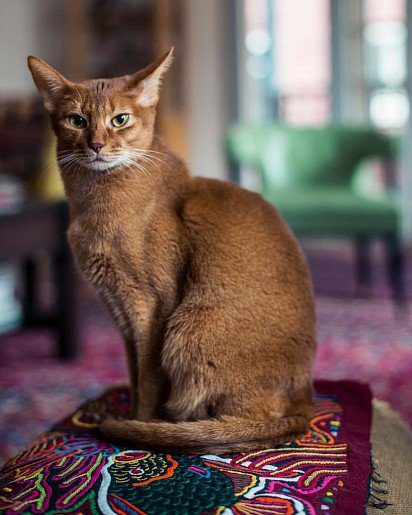
Abyssinian cats have become popular for a long time, but researchers have not been able to find out the exact geographical region and time of the breed. Several main versions have been formulated. The first said that animals first came to Europe after the war between England and Abyssinia (Ethiopia) in 1868, from where they originated. As the main evidence, supporters of the theory used an English book of the second half of the 19th century with a lithograph of a cat named Zulu, which was acquired by Captain Barrett-Lenard after the end of the military campaign. Despite the outward resemblance to modern representatives of the breed, there is no convincing evidence that the depicted cat was really an Abyssinian.
Other researchers thought that the animals had Egyptian roots, since ancient figurines depicted similar pets. Perhaps it was they who worshiped one of the most mysterious civilizations in the world. At the same time, the genetic analysis carried out by scientists showed that these cats have always been closely related to animals that lived on the coast of the Indian Ocean. In any case, the ancient line of the breed was considered extinct. Modern Abyssinian cats first appeared on shows in the UK in 1871, finishing third among 170 other breeds.
A detailed description of these animals was made in 1882, the original standard was formed by 1889, and official recognition with entry into the stud book was expected only in 1896. In the early 1900s, the first representatives came to America, which ensured the survival of the breed in the future. The Second World War almost completely wiped out Abyssinian cats from the European continent – only about a dozen individuals remained in the UK. It was American specimens that helped restore the population.
Due to the changes that cats had undergone in the United States, after the war it was necessary to recognize the existence of two branches that have survived to this day: American and European. These animals managed to gain worldwide fame, although they remained exotic in the CIS. In 2012, Abyssinian cats ranked second in the popularity rating of the US and Europe among short-haired breeds, according to the CFA.
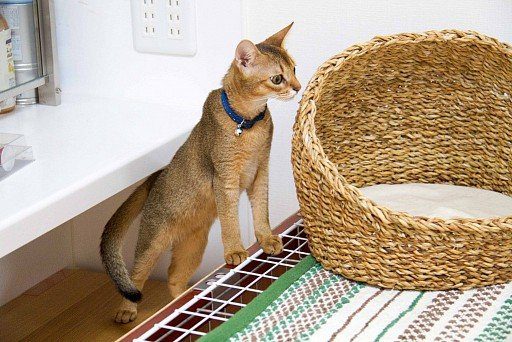
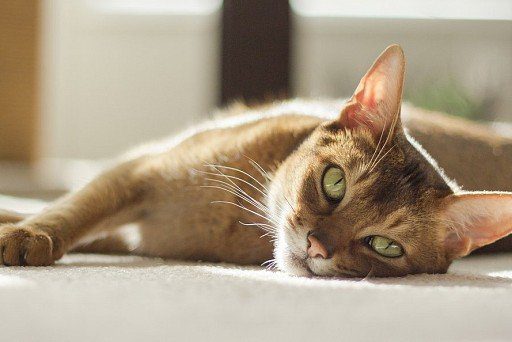
Video: Abyssinian cat
Appearance of the Abyssinian cat
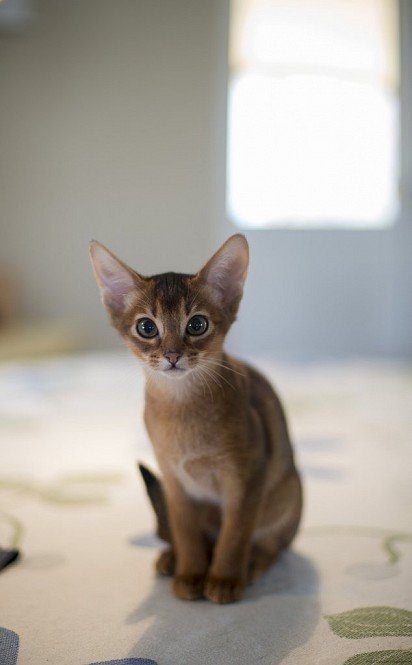

Abyssinian cats are strong and flexible and have a medium body size. Well-developed muscles and long legs allow animals to jump over a distance of 6 times their own length. Males are larger than cats, but sexual demorphism is not as pronounced as in other breeds. Usually the weight is in the range of 3-4.5 kg. Abyssinians have a chiseled silhouette, a harmonious physique, they move incredibly gracefully, which is reminiscent of miniature cougars. The American line has a more graceful and light physique than the European one.
ulo
Proportional, wedge-shaped without pronounced flat surfaces or points. The nape line gently merges with the neck. The nose is of medium length, straight, connected to the forehead by a smooth line. The chin is developed, firm, rounded. The muzzle is marked well, corresponds to the soft contours of the head. Adult males may have pronounced cheeks. Pinch, a pointed muzzle with a “fox” expression, are considered unacceptable.
Abyssinian Cat Eyes
The eyes of the Abyssinian cat are large, almond-shaped with a fairly wide landing at a slight angle. An oriental or absolutely round cut is not allowed. Shining eyes can be painted in any shade, from amber to green. They have a black stroke regardless of the suit. In the presence of a silver color, a green tint of the eyes is desirable. This zone always has a narrow light halo to match the undercoat. Dark lines in the corners of the eyes visually continue the outlines of the upper eyelid.
Mga igdulungog
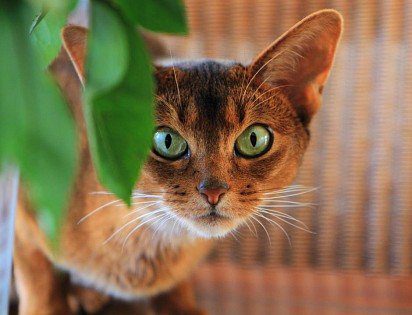

Large, set wide, slightly tilted forward, which gives the cat an alert look. The ears are wide at the base and narrowed and rounded towards the tips. The skin is covered with very short hair with a special bald spot in the center (the so-called “thumbprint”). Inside the ear may have woolen brushes.
Ang liog
The neck of the Abyssinian cat is graceful, rather long.
Lawas
Moderately elongated, flexible, with harmonious proportions. The body is of medium size, the muscles are developed, but not coarse. The chest is rounded, the back is slightly arched, but the hips should not be in a low position.
Mga bitiis ug mga tiil
The legs are strong, long and thin. The oval paws have small, well pressed together fingers, which gives the impression that the cat is stretched out on tiptoe.
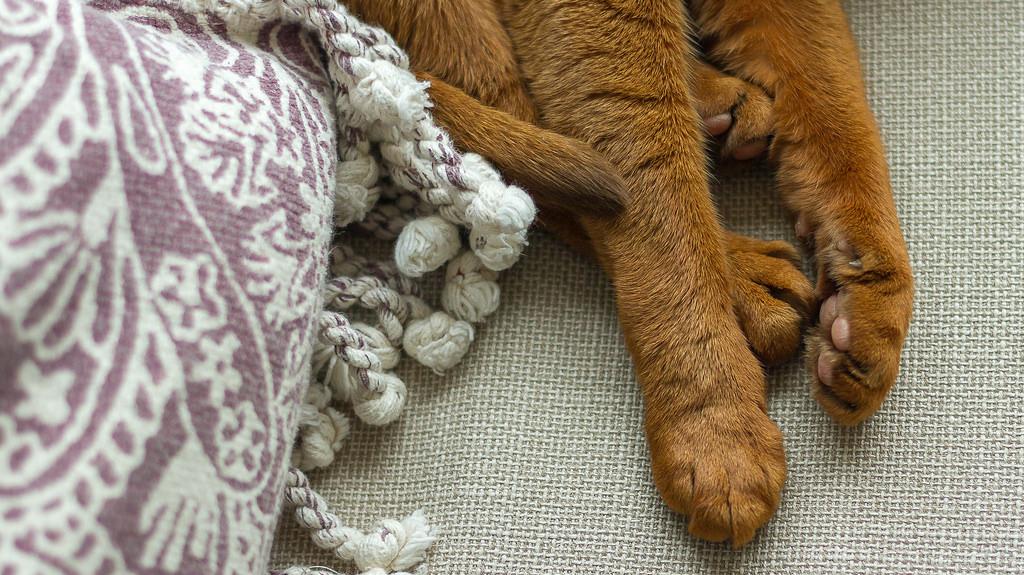

Buntag
The tail of the Abyssinian cat is thin, long, distinctly tapering towards the end.
Abyssinian Cat Wool
The cover is short and resilient, with a magnificent sheen and characteristic tints of ticking. The silky coat is thick and soft, with a slight undercoat, lying close to the body. The cover is longer on the back, but it is almost imperceptible.
Kolor
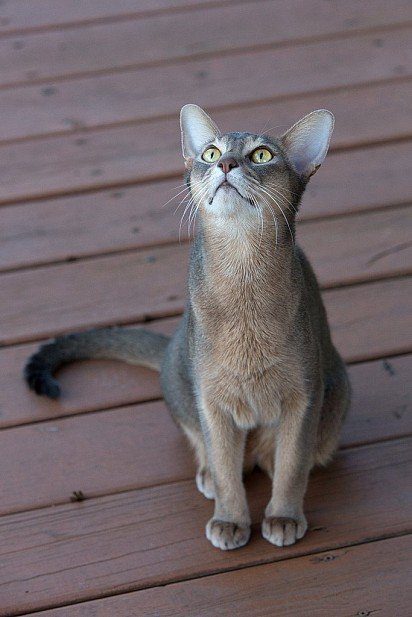

An important feature of the breed is a warm rich color with an unusual overflow and without a pattern. This is possible thanks to ticking – a phenomenon in which each hair has stripes of a light and dark shade (from 2 to 5). The soles of the hind legs, back, tip of the tail are somewhat darker in color than the rest of the body, and the inner surfaces of the legs, belly and chest are lighter. Ticking is distributed fairly evenly, pronounced light areas are only allowed on the chin, lips, around the nose. 4 colors of the Abyssinian cat are generally recognized:
- wild (ruddy) – brown-orange shade;
- sorel – more red cats with a reddish or chestnut tint;
- blue – a grayish-blue suit with a red tone;
- fawn – creamy reddish color.
Also recognized are variants of the listed colors “on silver”, when the cat has a silvery-white, rather than a warm creamy tone of the undercoat. Lilac and chocolate shades are not considered the norm in all felinological systems.
Abyssinian Cat Possible vices
Too narrow and elongated or too short round head, pronounced stripes on the legs, residual pattern on the body, pronounced cheeks. A significant disadvantage is considered to be a very light undercoat, insufficient ticking, round eyes, small ears. Animals with a flabby body, shortened legs, insufficiently long tail, without thin edging on the eyelids will not be able to get high marks on the show.
Mga bisyo sa diskwalipikasyon
Siamese body type, too light areas on the coat, unbroken necklace.
Photo of an Abyssinian cat
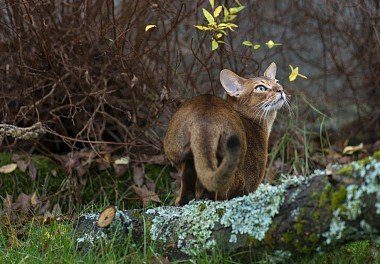

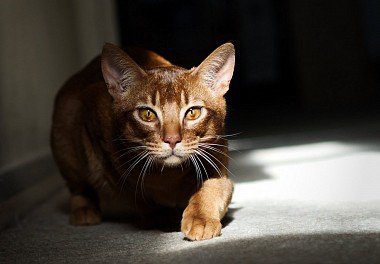

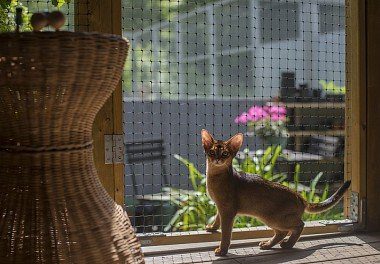

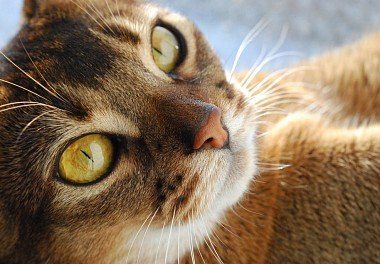

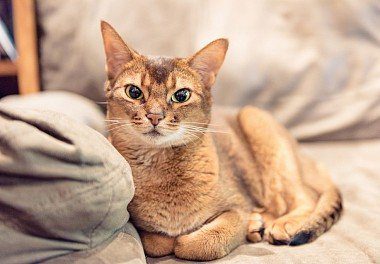

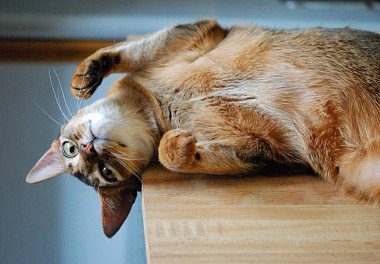

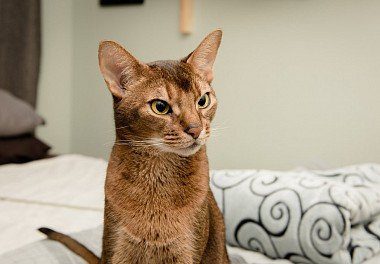

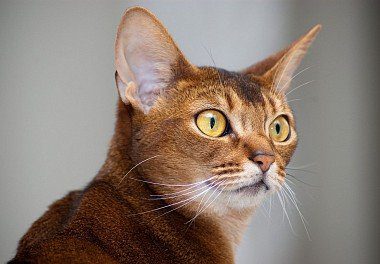

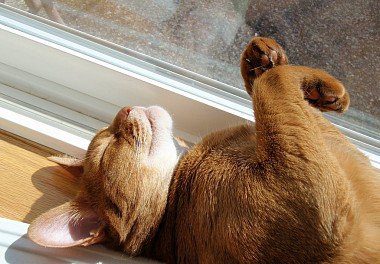

Ang kinaiya sa Abyssinian nga mga iring
Abyssinian cats are very active animals that seek to learn about the world around them. Their playfulness persists throughout life. Despite the predatory wild appearance, these cats are balanced, intelligent and smart, very affectionate to family members. Abyssinians do not show aggression, during games they usually do not release their claws, they are patient with children. Cats constantly patrol their territory in search of interesting activities, like to climb as high as possible for observation – provide them with such an opportunity.
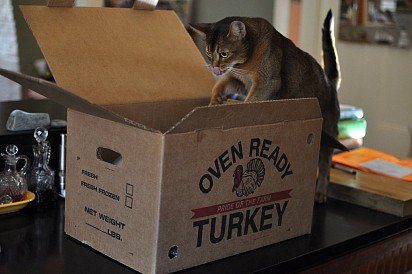

Representatives of the breed are distinguished by accuracy and cleanliness, respect the rules set by the owner: they will not tear furniture (especially if there is a scratching post), ride curtains and knock down flower pots. But it is better to clean sharp, especially fragile objects, close windows on the upper floors or protect them with a special net – in the heat of the game, the cat can harm itself or make a mess.
Abyssinian cats have an independent character, self-esteem, so they will not tolerate disrespectful treatment, they will not constantly sit on their hands. In character, they are a bit like dogs: they are devoted, play with pleasure, bringing objects thrown by the owner. Abyssinian cats are good parents, so they do not need help in childbirth, feeding or raising offspring. Smart, elegant pets require human attention, contact with the owner. Without this, the animal can become depressed and sick.
Pag-atiman ug pagpadayon
Abyssinians are unpretentious, but their health needs attention so that the pet gets sick less often and lives a long time.
Getting to know your new home
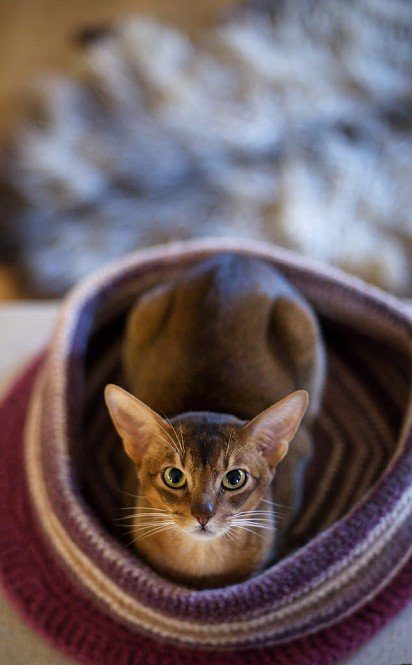

When bringing a kitten into the house, remember that he is very shy, so you should slowly introduce him to the outside world, family members, and pets. Pay attention to him, but do not overload him with games so that the baby has time to get stronger and get used to the new environment. The animal independently explores the house, it is worth providing him with a separate comfortable couch, scratching post.
Kalimpyo
Abyssinian cats are easily accustomed to a tray with natural filler or to the toilet. If you teach your pet to water procedures from a tender age, in the future there will be no problems with bathing at all – most of the breed loves to swim. It is advisable not to wash the animal too often, once during the molting period is enough. In this case, use a special shampoo for short-haired cats (without conditioner). After bathing, dry your pet thoroughly and let it dry.
Periodically it is worth brushing the Abyssinian cat’s teeth, as it is prone to the formation of plaque and tartar. Particular attention should be paid to the cleanliness of the ears.
Abyssinian Cat Wool
A short dense fur coat practically does not need care. It is enough to walk through the wool with a special brush once a week. Shedding passes quickly, does not cause any particular inconvenience.
Food
Abyssinians will willingly eat special food or food you prepare. In the latter case, it is worth consulting with a veterinarian who will prescribe additional vitamins and nutritional supplements. Pay a little attention to the diet so as not to overfeed the animal. At the age of one year, three meals a day should be provided with food for kittens. It is advisable to use the same brands that the breeder fed the babies with. After reaching the age of one year, you can switch to products for adult cats, giving out a slightly larger portion twice a day.
It is advisable to boil meat and fish, give raw foods only being sure of their quality and after cutting into small pieces. Many Abyssinian cats enjoy eating fruits and vegetables – over time, you yourself will understand which ones your pet prefers.
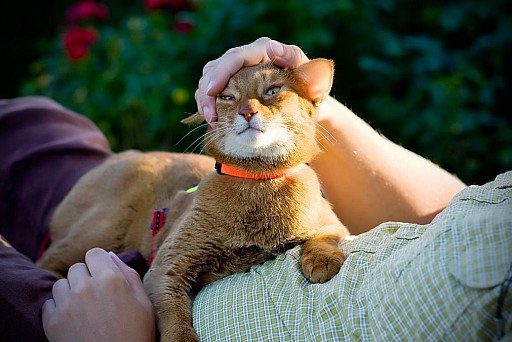

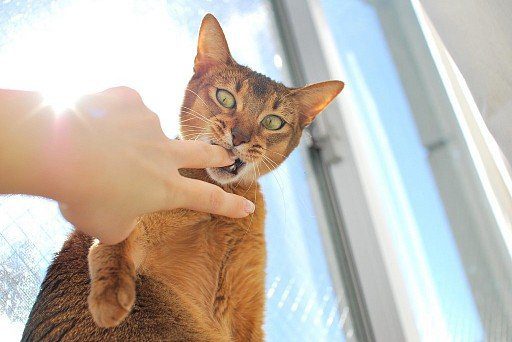

Health and disease of the Abyssinian cat
In general, Abyssinian cats are healthy, cheerful animals. If diseases do occur, they are more often associated with poor nutrition or genetic problems. So, in some lines, retinopathy of the retina develops, due to which the Abyssinian cat becomes completely blind by the age of 5. This disease can be detected in a kitten in advance and responsible breeders weed out such individuals. Rarely, anemia can develop with age due to a lack of pyruvate kinase. Infrequently, renal amyloidosis occurs, leading to serious consequences for the health of the pet. The breed is predisposed to hip dysplasia, dislocation of the patella. You should brush your teeth regularly, monitor the absence of “licking”. Periodically bring your Abyssinian cat to the veterinarian for a preventive visit and do not self-medicate.
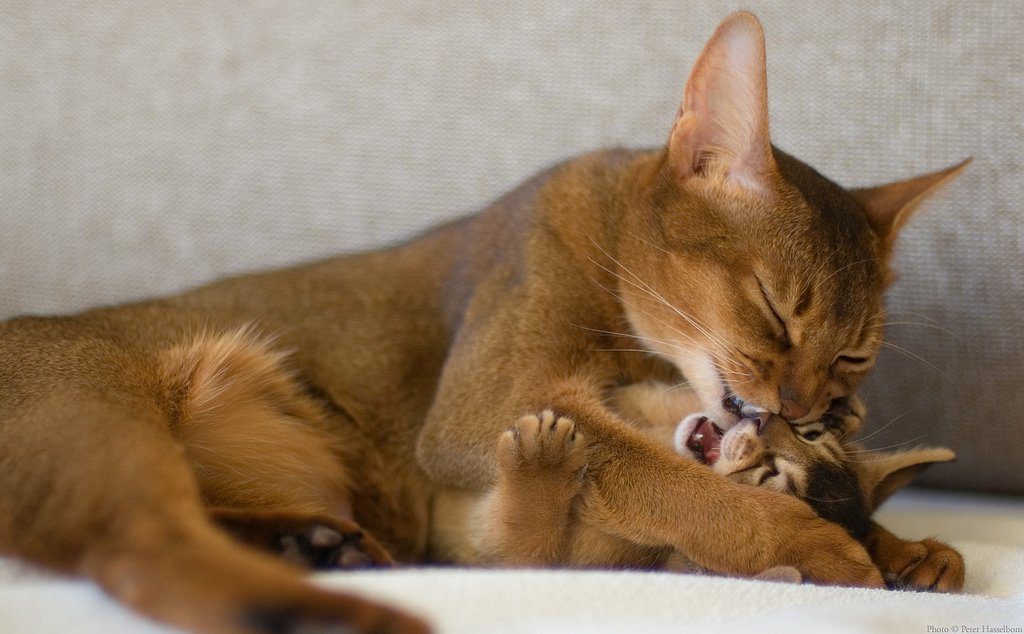

Sa unsa nga paagi sa pagpili sa usa ka kuting
Contact only well-known breeders or large nurseries. Take a kitten should not be earlier than three months of age. By this time, the seller manages to give the Abyssinian several vaccinations, accustom him to the tray, transfer to independent nutrition. In addition, the baby will psychologically get stronger, will be ready to move to a new home. Taking the animal at an earlier age, you seriously risk his physical and emotional health.
Make sure that the breeder issues all medical certificates for the animal, a pedigree, which will record the absence of closely related crosses. The kitten should be playful, contact, not too shy. A shiny coat, confident gait, absence of palpable hernias on the abdomen, discharge from the eyes or ears are the main signs of a healthy Abyssinian cat.
Photo of Abyssinian kittens
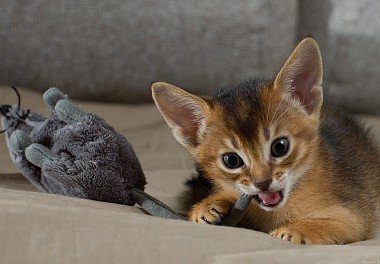

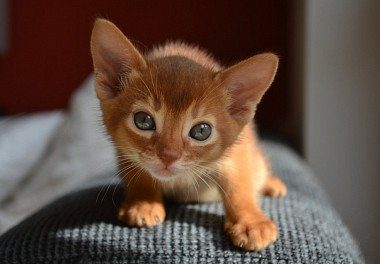

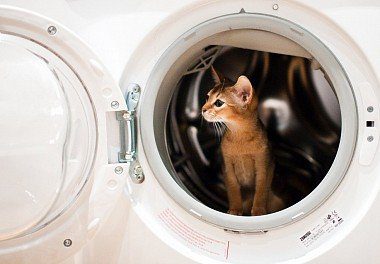

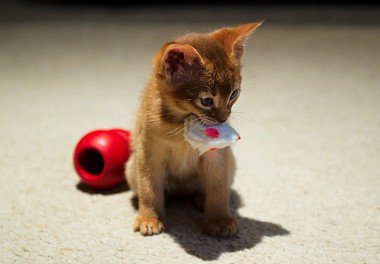

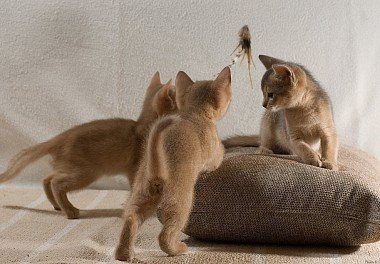

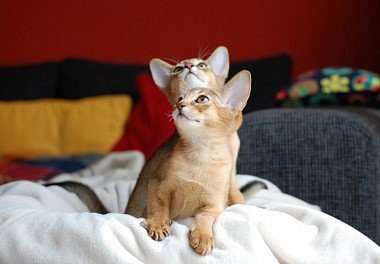

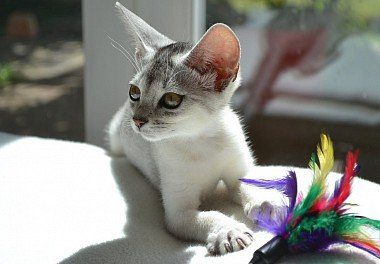

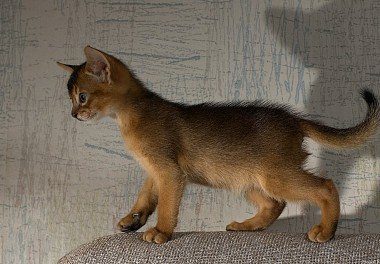

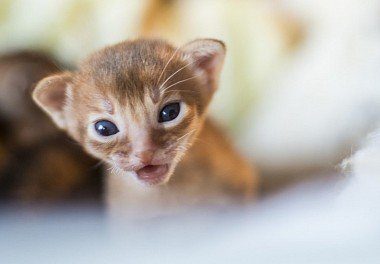

How much is an Abyssinian cat
The price of an Abyssinian cat ranges from 250-500$. Individuals with a particularly prestigious pedigree, outstanding data may cost more. Good catteries allow you to choose a kitten for a show or just a home companion. In the second case, the sale “under castration” is possible. Such a pet will cost less, and the condition of mandatory castration means that the breeder considers the individual unsuitable for the development of the breed, although this does not affect the character in any way.





